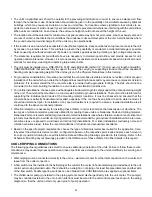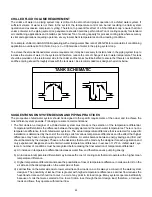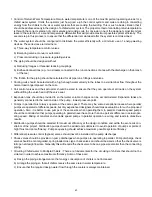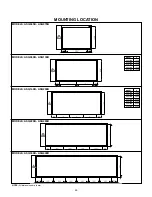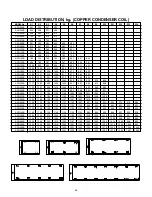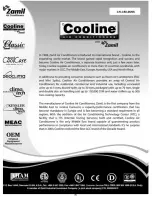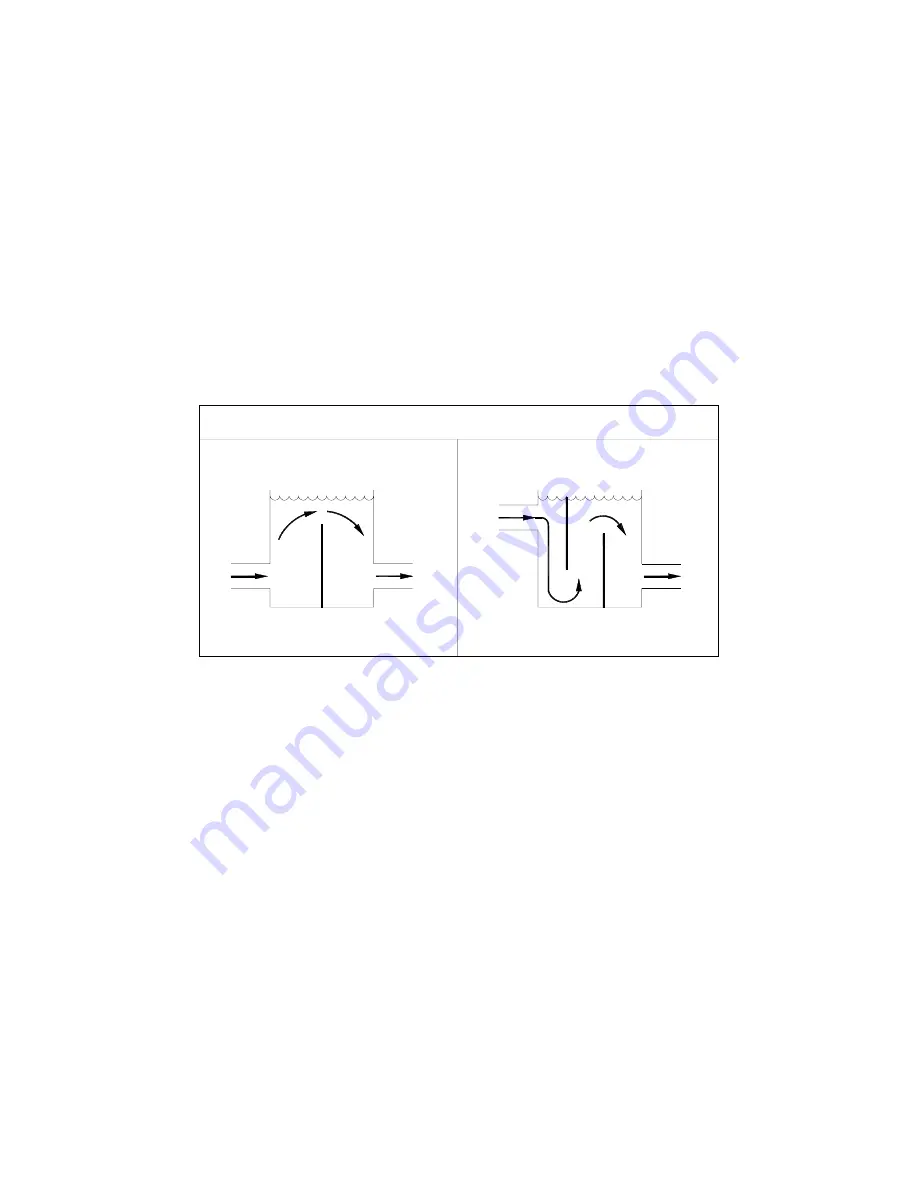
4
2
CHILLED FLUID VOLUME REQUIREMENT
The volume of water in a piping system loop is critical to the smooth and proper operation of a chilled water system. If
sufficient volume of water is not there in the system, the temperature control can be lost resulting in erratic system
operation and excessive compressor cycling. Therefore, to prevent this effect of a ‘Short Water Loop’ ensure that total
volume of water in the piping system loop equals or exceeds 3 Gallons per Nominal Ton of cooling capacity for standard
air conditioning applications and 6 Gallons per Nominal Ton of cooling capacity for process cooling jobs where accuracy
is vital and applications requiring operation at very low ambient temperatures and low loading conditions.
For example, chiller model ASQ100B operating with a design water flow rate of 205 GPM for a standard air conditioning
application would require 100 (Nom. Cap.) x 3 = 300 Gallons of water in the piping system loop.
To achieve the aforementioned water volume requirements, it may be necessary to install a tank in the piping system loop to
increase the volume of water in the system and therefore, reduce the rate of change of return water temperature. This tank
should be provided on the return water side to the chiller and the tank should be baffled to ensure that there is no stratification
and the entering stream thoroughly mixes with the tank water. See recommended tank design schematics below:
SUGGESTIONS ON SYSTEM DESIGN AND PIPING PRACTICES
The prospective chilled water system should be designed to the specific requirements of the owner and to achieve the
most efficient system possible. Following are some recommendations:
•
The first decision a designer of a chilled water system must make is the selection of the temperature differential.
Temperature differential is the difference between the supply water and the return water temperatures. There is no one
temperature difference for all chilled water systems. The actual temperature difference that is selected for a specific
installation is determined by the cost of the cooling coils for various temperature differences and the effect that higher
differences may have on the operating cost of the chillers. A careful balance between energy savings and first cost
should be made by the designer. These are the decisions that must be made by the designer for each application and
only experienced designers should entertain water temperature differences in excess of 12
0
F on chilled water sys-
tems. A number of conditions must be recognized before making the final selection of temperature differential:
a) An increase in temperature differential decreases water flow and therefore saves pumping energy.
b) An increase in temperature differential may increase the cost of cooling coils that must operate with a higher mean
temperature difference.
c) Higher temperature differentials increase the possibilities of loss of temperature difference in coils due to dirt on the
air side and chemical deposits on the water side of them.
d) Laminar flow on the water side due to lower velocities at low loads on a coil is always a concern of the water system
designer. The possibility of laminar flow is greater with higher temperature differences. Laminar flow reduces the
heat-transfer rate and should not occur in a coil at any point in its load range. Many systems operate inefficiently
because of coils that were selected at too low a friction loss through them at design load; therefore, at reduced
loads and flows, they operate with laminar flow.
TANK SCHEMATIC













